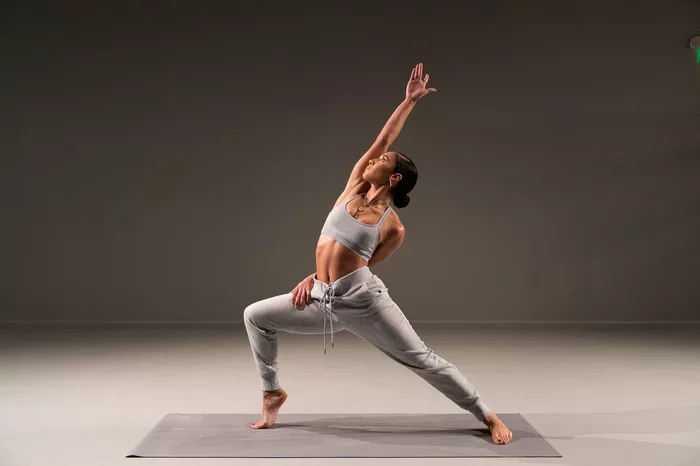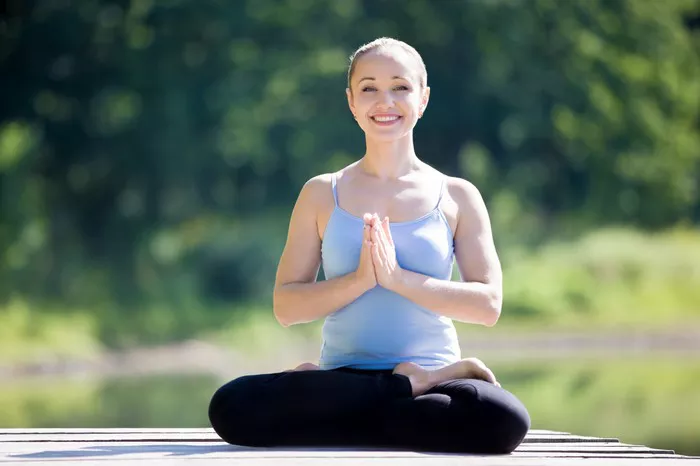Yoga, a discipline that originated in ancient India, has transcended cultural boundaries and evolved into a global practice. While the physical postures, or asanas, are the most popular aspect of yoga today, its true essence extends much further. In fact, yoga is fundamentally about uniting the body, mind, and spirit, cultivating awareness, and ultimately, realizing our true nature. Among the many paths of yoga, Karma Yoga and Jnana Yoga stand out as distinct approaches that lead to the same ultimate goal: liberation (moksha). In this article, we will explore the differences between these two yogic paths, their unique philosophies, and their practical applications in daily life.
What is Karma Yoga?
Karma Yoga, often called the “Yoga of Action,” is a path that emphasizes selfless service and action performed without attachment to the results. Derived from the Sanskrit word karma (meaning “action” or “deed”) and yoga (meaning “union” or “discipline”), Karma Yoga is based on the principle that actions, when performed with the right attitude, can lead to spiritual growth and liberation.
At the core of Karma Yoga is the idea that by performing one’s duties and responsibilities without attachment to the outcome, one can purify the mind and reduce the ego’s influence. This is achieved by cultivating an attitude of detachment—detachment not from action itself, but from the fruits of the action.
Key Principles of Karma Yoga:
Selflessness: Actions performed should not be driven by personal gain, ambition, or desire for recognition. The goal is to serve others and contribute to the well-being of society without expecting rewards.
Detachment: One must learn to perform actions without being emotionally attached to the results. Whether success or failure follows, the practitioner remains indifferent and continues to act with integrity.
Mindfulness: Karma Yoga encourages awareness in every action. Whether it’s working, studying, or even performing mundane tasks, it teaches that all actions, when performed with mindfulness, can be acts of devotion.
Purification of the Heart: By focusing on selfless service, the practitioner’s heart becomes purified. Over time, selfish tendencies, such as pride and greed, diminish, and compassion and humility take their place.
Equanimity: This path trains the practitioner to maintain a balanced mind in the face of life’s successes and failures, pleasures and pains. Equanimity allows one to remain steady and focused on the higher purpose of life.
Practical Applications of Karma Yoga:
Selfless Service: Volunteering your time, skills, or resources for a charitable cause without expecting anything in return.
Duty and Responsibility: Whether in your personal life, job, or family, performing your responsibilities diligently and with integrity, without getting attached to the results.
Mindful Work: Transforming everyday tasks into spiritual practices, such as cleaning, cooking, or even answering emails with full attention and a heart full of gratitude.
Karma Yoga does not require one to renounce the world, but rather to engage with it in a spirit of service and selflessness. It’s about transforming ordinary actions into spiritual practices.
What is Jnana Yoga?
Jnana Yoga, often referred to as the “Yoga of Knowledge,” is the path of wisdom, self-inquiry, and discernment. The word jnana means “knowledge” or “wisdom,” and yoga means “union.” Jnana Yoga is concerned with the knowledge of the self and the nature of the universe. It is based on the belief that liberation comes through direct knowledge of reality—specifically, the realization of one’s true nature (Atman) and the unity of the individual soul with the supreme consciousness (Brahman).
In Jnana Yoga, the practitioner seeks to discern the difference between the real (unchanging, eternal truth) and the unreal (the transient, illusory aspects of life). This knowledge is not acquired through external learning or intellectual analysis alone but through deep contemplation, inner insight, and meditation.
Key Principles of Jnana Yoga:
Self-Inquiry (Atma-Vichara): Jnana Yoga encourages asking the fundamental question, “Who am I?” This inquiry leads to a direct experience of one’s true nature beyond the ego, the mind, and the body.
Discrimination (Viveka): A key practice in Jnana Yoga is the ability to discern between the real and the unreal—what is permanent versus what is temporary. By practicing viveka, the practitioner learns to detach from the distractions and illusions of the material world.
Renunciation of Ignorance: Ignorance (avidya) is seen as the root cause of suffering in Jnana Yoga. This ignorance must be replaced with true knowledge, which is not intellectual but experiential and direct.
Non-Attachment (Vairagya): A practitioner of Jnana Yoga develops a sense of non-attachment to the world and its fleeting pleasures. This non-attachment is essential for deep meditation and the experience of oneness with the universe.
Meditation and Contemplation: The ultimate goal of Jnana Yoga is the realization of one’s divine nature, which is achieved through deep meditation and the cultivation of introspective awareness.
Practical Applications of Jnana Yoga:
Self-Inquiry: Regularly practicing introspection and asking the fundamental question, “Who am I?” to peel away layers of identity and ego.
Study of Sacred Texts: Studying texts such as the Upanishads, Bhagavad Gita, and other scriptures that explore the nature of the self, the universe, and ultimate reality.
Meditative Practices: Engaging in deep meditation to quiet the mind, overcome distractions, and attain knowledge of the true self.
Cultivation of Discernment: Developing the ability to differentiate between what is real and lasting versus what is temporary and illusory in the world.
Unlike Karma Yoga, which focuses on action, Jnana Yoga is more focused on mental discipline and wisdom. It requires deep contemplation and the application of reasoning to reach the realization that the individual self (atman) is one with the universal consciousness (Brahman).
Karma Yoga vs Jnana Yoga: The Key Differences
While both Karma Yoga and Jnana Yoga lead to the same ultimate goal—liberation from the cycle of birth and death (samsara)—they approach this goal in different ways.
1. Focus: Action vs Knowledge
Karma Yoga is centered on action. It teaches that selfless action, when performed with the right attitude, leads to liberation. The focus is on engaging in the world with mindfulness, compassion, and detachment.
Jnana Yoga, on the other hand, focuses on knowledge and wisdom. It involves the intellectual and experiential realization that the true self is beyond the body and mind. It encourages deep meditation, self-inquiry, and the pursuit of wisdom to transcend ignorance and attain enlightenment.
2. Role of the Mind
In Karma Yoga, the mind is primarily used to maintain focus and mindfulness during actions. The emphasis is on transforming everyday tasks into spiritual practices by acting without attachment to the outcomes.
In Jnana Yoga, the mind plays a critical role in discriminating between the real and the unreal. It requires the practitioner to question beliefs, perceptions, and illusions through introspection and contemplation.
3. Path of Engagement vs Path of Withdrawal
Karma Yoga encourages engagement with the world and active participation in society, relationships, and responsibilities. The focus is on acting in the world with selflessness and mindfulness.
Jnana Yoga often requires more introspection, detachment, and withdrawal from the distractions of the world. The focus is on inner contemplation, meditation, and renunciation of the ego to realize the oneness of the self and the universe.
4. The Role of Ego
Karma Yoga aims to dissolve the ego through selfless action. By performing actions without attachment, the practitioner reduces the influence of the ego and fosters a sense of humility and compassion.
Jnana Yoga seeks to dissolve the ego through wisdom. The practitioner uses knowledge to understand that the ego is illusory, and that the true self is not the individual personality but the divine consciousness that pervades all existence.
5. Approach to Liberation
In Karma Yoga, liberation (moksha) is achieved through the purification of the heart and mind, and by acting in a way that is in harmony with the universe, without attachment to the outcomes.
In Jnana Yoga, liberation is achieved through direct realization and inner awakening, when the practitioner recognizes their true self beyond the body and mind and experiences unity with the divine.
Which Path Should You Choose?
Both Karma Yoga and Jnana Yoga are valid and effective paths to spiritual growth. The choice between the two often depends on the individual’s personality, life circumstances, and spiritual inclination.
If you are someone who enjoys helping others and finds fulfillment in service, Karma Yoga may resonate more deeply with you. It offers a practical way to integrate spirituality into everyday life.
If you are more inclined towards deep introspection, philosophical inquiry, and meditation, Jnana Yoga might be the path that suits you best. It provides a way to explore the nature of reality and your true self through wisdom and contemplation.
For many practitioners, combining elements of both paths can be an effective approach. One can perform selfless actions (Karma Yoga) while simultaneously cultivating knowledge and wisdom (Jnana Yoga). Ultimately, the goal of both paths is the same: to transcend the limitations of the ego, realize the oneness of all beings, and experience liberation.
Conclusion
Karma Yoga and Jnana Yoga offer two distinct yet complementary approaches to spiritual growth. Karma Yoga emphasizes the importance of selfless action, mindfulness, and detachment from the results of one’s deeds, while Jnana Yoga focuses on the pursuit of wisdom, self-inquiry, and the realization of one’s true nature. Both paths lead to the ultimate goal of moksha, or liberation, and both can be deeply transformative, depending on one’s unique disposition and spiritual aspirations.
Whether you are drawn to action or knowledge, the most important aspect is to cultivate a sincere commitment to your practice and to approach it with humility and dedication. By walking the path of yoga, whether through selfless service or the pursuit of wisdom, you embark on a journey toward inner peace, self-realization, and liberation.
Related Topics:


























